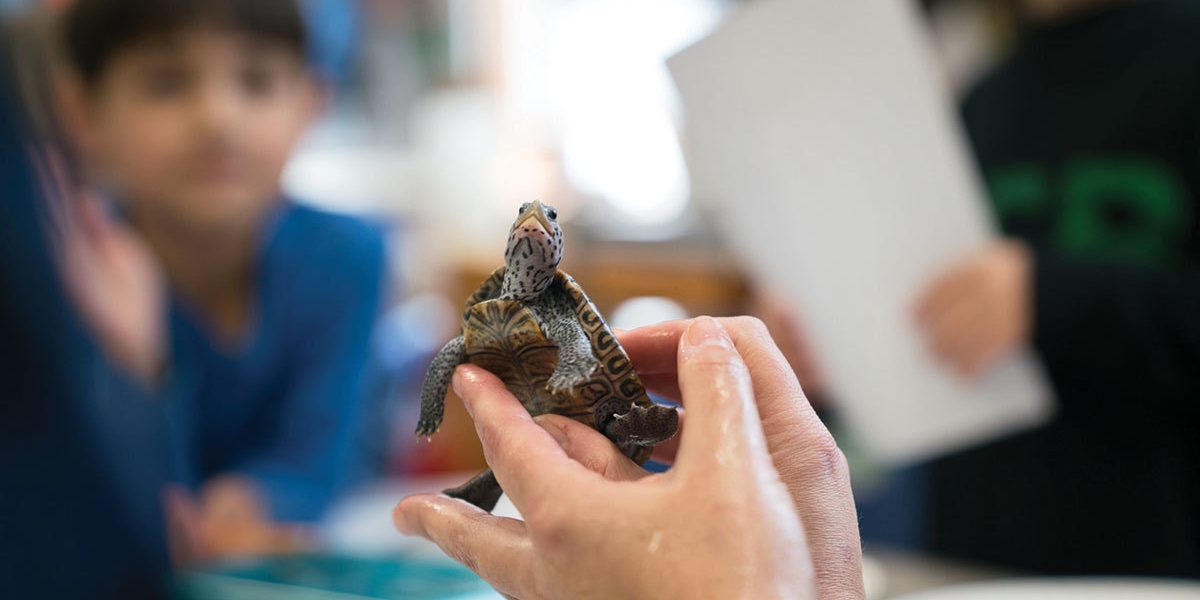Education & Family
Life Aquatic
An unlikely class pet hopes to inspire young conservationists.
On the walls of a second-floor classroom in The Green School of Baltimore hang hand-drawn welcome cards, scribbled in crayon and colored pencil. Each is different, decorated with waves, grasses, and fish, but one image is constant: a prominent, bright green turtle.
These cards are for the class pet, Hidey Hermit Crab, who is, in fact, a diamondback terrapin. Once prolific along the Chesapeake Bay, this speckled-skin turtle with an iconic shell was designated the Maryland state reptile in 1994 but has since been classified as a threatened or endangered species in some East Coast states, though its populations do seem secure along our local estuary.
For now, at least, Hidey is hiding safely beneath faux grasses and a plastic rock in Diana Duce’s first grade classroom as part of the National Aquarium’s decade-old Terrapins in the Classroom program, which brings the elusive turtle right before her students’ eyes. Each fall, more than 40 Maryland schools (elementary through high school) receive hatchling terrapins—then the size of a quarter—for students to observe, study, and learn from throughout the year. Since 2008, the program has raised more than 400 terrapins with the goal of inspiring a future generation to feel connected to the Chesapeake Bay.
“We’re hoping that, by understanding the impact that the bay’s health can have on this animal, the students will want to be lifelong stewards of their environments,” says program director Marcie Orenstein. “It has even encouraged some students to pursue careers in environmental science and veterinary medicine.”
This month, once the terrapin has grown, some of Ms. Duce’s students will then hop on school buses, throw on life jackets, and head out on boats bound for Poplar Island on the Eastern Shore. Here, the turtle, having been tagged at the aquarium for future research purposes, will be released back into the waters from which it came.
On these trips, “some students get to experience the Chesapeake Bay for the first time,” says Orenstein. “Through this program, they can see the effects of erosion and pollution and really understand how their actions, even in the schoolyard, can impact these natural habitats and the animals that live in them.”
Watching the turtle swim away can be somewhat emotional for the kids, who write good luck notes and throw going away parties before their departure. “I’m going to be happy but also sad,” says Brooklyn O’Neal Dorsey, 7, echoing the shared sentiment of her classmates, “because I really love him and he’s my friend.” For that, Ms. Duce makes sure to remind her students of what an amazing thing it is that they have done. “We’ll stop and say, hey, Hidey is back in the wild now,” she says. “I wonder where he is today. I wonder what he’s doing.”
